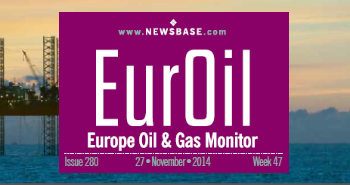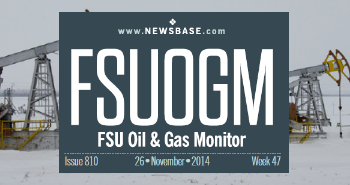European gas exceeds $2,200/1,000 cubic metres for the first time since March

Dutch TTF hub gas prices rose to €202/MWh, or c$2,200 per 1,000 cubic metres, on July 26, reports Kommersant, as flows from Russia’s Nord Stream pipeline were curtailed from 67mn cubic metres per day at the beginning of the week towards an announced target of 33 mcm per day after Gazprom shut down one of the remaining two turbines in operation due to excessive hours.
“The European gas crisis continues to escalate. Gas prices have returned to levels only seen in March as Nord Stream flows dwindle, while the outlook for winter looks bleak for European consumers,” BCS GM said in a note.
The much-discussed repaired turbine recently sanctioned and then released by Canada is still in Germany, and will not reach the Portovaya pumping station for at least several days. Gazprom reduced flows of gas to Europe by 60% in mid-June when the compressor unit was sent to Canada and not returned due to sanctions. Since then Canada has changed its mind and the EU ruled the return of the unit does not break sanctions.
However, Gazprom in another statement said that problems remain with the documents and that the compressor has not been returned to Russia. Russian Foreign Minister Sergei Lavrov said during his current tour of Africa that Russia had not received clear explanations regarding the status of Siemens turbines for the Nord Stream gas pipeline.
The delays are widely seen as politically motivated to put pressure on the EU into making more sanctions concessions. Gazprom is reportedly asking the EU to lift sanctions on all its imported equipment needs.
“The issues are much more complex than just turbine overhauls: This situation with gas flows – not just via Nord Stream but also through the Yamal-Europe line via Poland and via Ukraine – has long since left the realm of operational issues and entered that of political considerations. All sides have taken decisions based on priorities other than purely economic in nature,” BCS GM said, listing the main issues:
- Ukraine’s decision to disallow the entrance of Russian gas via the Sokhranovka entry point in mid-May;
- Poland sanctioned Gazprom, blocking it from receiving dividends from EuRoPol GAZ, a joint venture with Poland’s PGNiG running a section of the Yamal-Europe line;
- Russia responded by ordering Gazprom to halt shipments via Yamal-Europe; and
- Canada decided to disallow the return of the overhauled Siemens turbine to Russia, despite the fact that existing pipeline projects had been explicitly excluded from sanctions regimes.
“As the core problem is political, the solution will also have to be political, and thus it is beyond the scope of mere economic or operational analysis,” BCS GM said.
Now Europe is facing the possibility of being cut off from gas imports from Russia during the winter, which will cause its economy to contract by 2-3%, according to a recent International Monetary Fund (IMF) study. The EU launched a voluntary deal on July 26 for the members to reduce their gas consumption by 15% between August and March in an effort to save gas ahead of the winter.
In the meantime, European companies continue to refill their tanks from the reduced Nord Stream 1 flows, via Ukraine and also the TurkStream pipeline, which has been unaffected.
“Despite the sharp slowdown of Russian gas flows, Europe is meeting its targets for refilling storage ahead of winter, mostly on the strength of record LNG imports attracted by the astronomical price for gas,” BCS GM said. “However, just meeting ordinary gas storage levels will not ensure a fully-supplied winter, if Russian flows are not available in full at least through Ukraine and Nord Stream. Europe has meanwhile accepted a plan to reduce gas demand by 15%, but we think this is mostly a political gesture, as $2,200/mcm gas prices now and outright shortages (and likely even higher prices) come winter will achieve this on their own without bureaucratic intervention.”



Follow us online